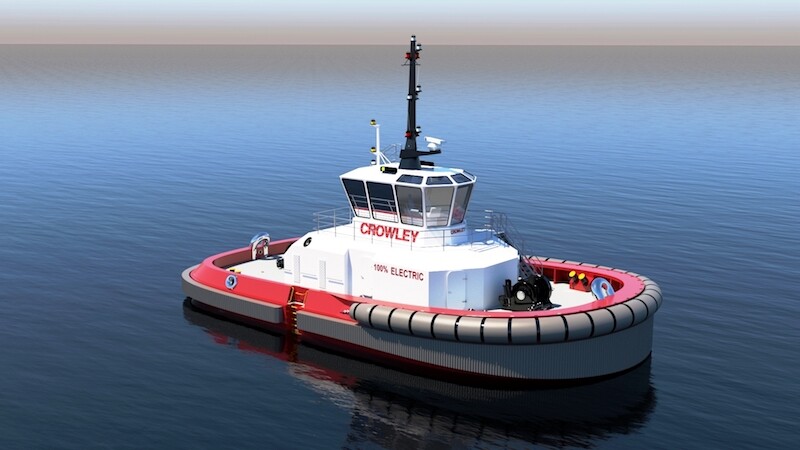Crowley Engineering Services has completed the design of the first fully electric ship-assist U.S. tug with autonomous technology.
The Crowley design leverages a large battery system and power saving technology to operate in a fully electric mode while producing zero air emissions or greenhouse gases. The 82'x40'x17'9" tug will provide 70 short tons of bollard pull, featuring an azimuthing drive propulsion system with two 1,800-kW motors and a 6-MWh battery. The system will give the tug a top speed of 12 knots. The tug has two small generators for emergency use and to enable the vessel to transit longer distances at a reduced speed. The bow and stern will each have a 40-hp electric render/recover winch. The tug will have tankage for 9,800 gals. fuel, and 750 gals. fresh water. Its draft will be 16'. There will be four berths.
The design also supports fully customizable features to meet the vessel design requirements with the future in mind. The platform design can be adjusted for alternate power capacities suitable for a standard hybrid framework if desired. The fully modular batteries allow for upgrades as technology changes. In addition, Crowley has developed an onshore charging station to fully support charging and reliable performance at the home port.
“Crowley’s design provides operators the tugboat solution to continue serving ships quickly and powerfully, while reducing their environmental impact by eliminating a carbon footprint,” said Ray Martus, vice president, Crowley Engineering Services. “This new design sets the standard for innovation by showing that sustainability and power can work together seamlessly in our maritime industries.”
With no exhaust stack, the tug has 360 degrees of visibility from the pilot’s station, allowing the operator to see without obstruction. The tug has also been designed for future autonomous operation to increase the safety and efficiency of the operation including integrated automation and control systems. The intelligent maneuvering and control system offers more efficient vessel operations and allows masters to focus holistically on the overall control and positioning of the vessel in increasingly busy harbors.
The vessel was sized and designed to complete two ship assist jobs in the harbor with minimal to no charging required. The battery system is modular and can be maintained and upgraded for future battery technology improvements without any significant modifications to the vessel.
The tug is designed to ABS Class and compliant with U.S. Coast Guard Subchapter M regulations.




